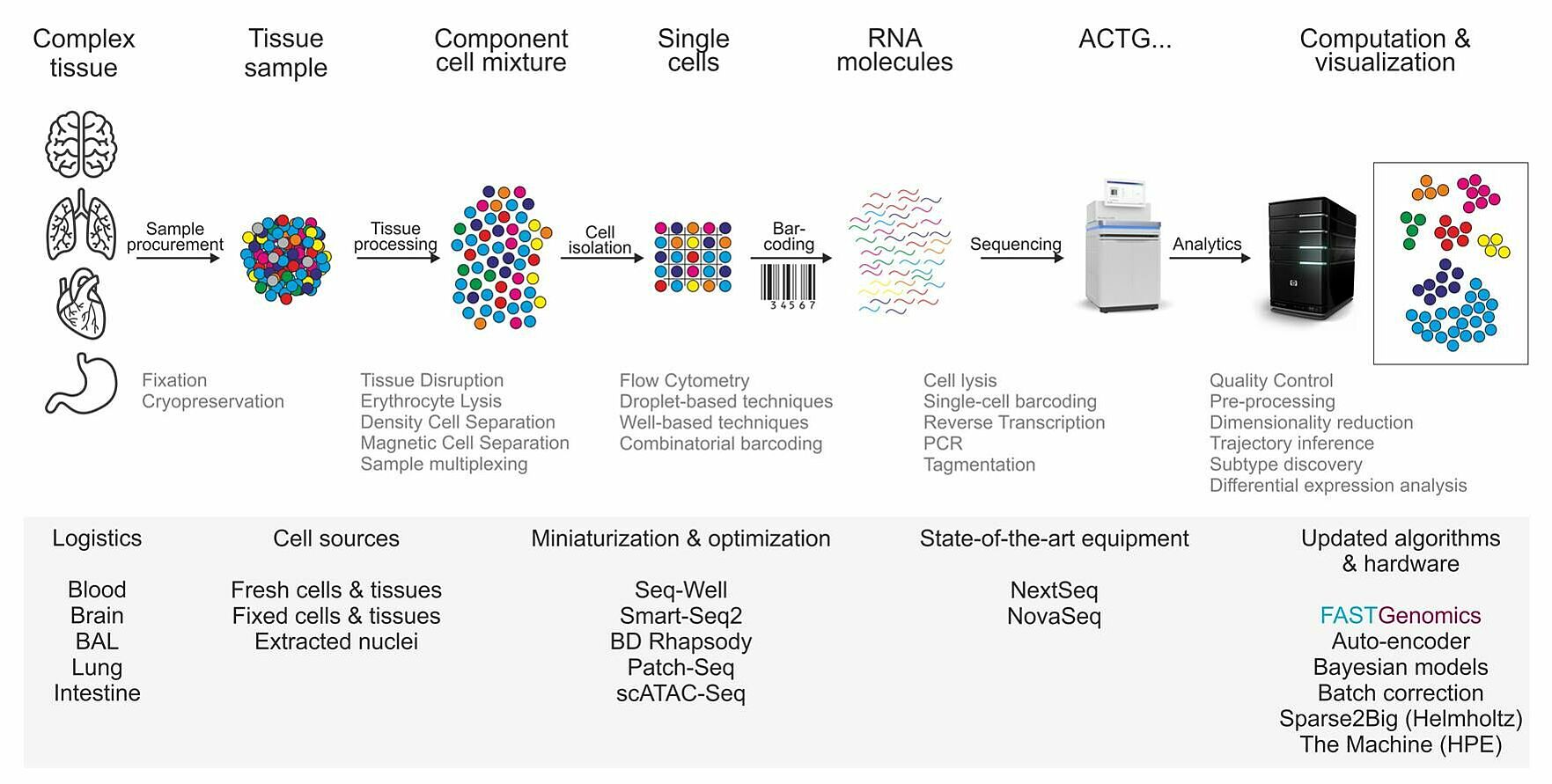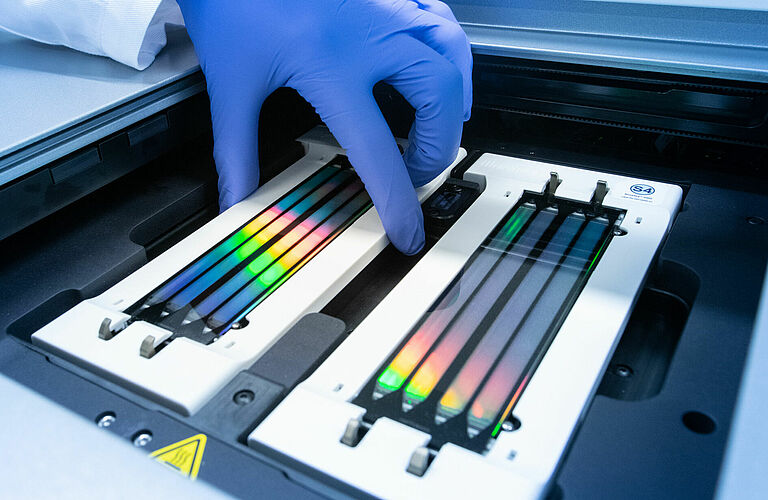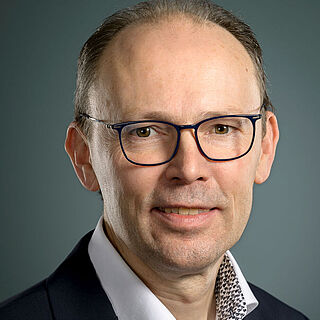Platform foR SinglE Cell GenomIcS and Epigenomics (PRECISE)
Single cell genomics is entirely changing the way how we are characterizing cellular responses in homeostasis and many common diseases. In fact, the cellular landscapes will be re-written for many complex organs and diseases.

Platform for Single Cell Genomics and Epigenomics
The "Platform for Single Cell Genomics and Epigenomics" is a joint Venture between the University of Bonn and the German Center for Neurodegenerative Diseases (DZNE). Both institutions seek to conjointly increase their expert knowledge in the areas of genomics and bioinformatics. Particular focus lies on the development and application of tools and technologies for single-cell genomics and on providing these technologies for internal and external collaborators.
The laboratory space of the platform is situated in the new DZNE building B, the bioinformatics unit is located at the LIMES Institute. Both units are closely collaborating.
Some of the technologies offered at PRECISE are listed below:
SMART-Seq2 (Picelli et al., Nat. Methods, 2013) is the single cell RNA-seq (scRNA-seq) method with the highest sensitivity. It allows sequencing of the transcriptomes of hundreds of cells in parallel, over the entire transcript length and entirely relies on off-the-shelf reagents. SMART-seq2 is the best choice when it comes to the study of splice variants, SNPs or monoallelic gene expression. Library preparation costs are significantly reduced by using an in-house version of Tn5 transposase (Picelli et al., Genome Research, 2014).
The SeqWell method allows the sequencing of few thousand cells per experiment (Gierahn et al., Nat. Methods, 2017). SeqWell captures and counts the 3´-end of each transcript and is most suitable in the initial (discovery) phase of an experiment due to its higher throughput and significantly lower cost per cell as compared to Smart-seq2. It combines the benefits of performing reactions on a nanoliter scale with the simple compartmentalization of individual cells in microwells.
PRECISE was the only alpha-tester in Europe for this technology, recently introduced on the market by BD Genomics. Rhapsody is based on the CytoSeq method (Fan et al., Science, 2015) and allows the 3´-end sequencing of up to 50K cells/experiment with targeted (partly) customizable gene panels (500 or 1000 genes) or of the whole transcriptome. Rhapsody uses microwell arrays for single-cell capture and is equipped with an imaging system for cell visualization and counting. The price for sequencing of a targeted panel is considerably lower since it doesn´t require the analysis of the entire transcriptome. Rhapsody samples can be multiplexed and/or surface proteins can be simultaneously quantified during RNA-Seq based on the CITE-Seq method (Stoeckius et al., Nat. Methods, 2017)
Single-cell transcriptomics is a rapid moving field, where new library preparation and computational methods are introduced every few weeks. It is therefore vital to keep up with the pace of technological development. We are investing important amounts of time, human and technical resources in testing and implementing recently released new single-cell technologies as well as developing better, faster and inexpensive methods to be able to offer the most cutting-edge technologies available and tackle ever more complex biological questions.
Some of the new technologies in the pipeline are listed below:
A “split-and-pool” 3´-sequencing method based on an approach that makes use of combinatorial indexing and Tn5 transposase (Cao et al., 2017). SciRNA-seq works on fixed cells, does not require single cell sorting and is easily scalable to thousands of cells, thus reducing the per cell library preparation cost.
Equipment of the platform:
- MiSeq
- NextSeq500
- NextSeq2000
- NovaSeq6000
- C1 microfluidics platform
- BD Rhapsody
- Tecan Freedom EVO
- IP-Star
- Nanodrop II
- Roche Lightcycler 480
- Agilent Tapestation 4200
- Covaris S220
- Covaris LE220
- GeoMx Digital Spatial Profiler
- PacBio - Sequel II
- 10X - Chromium and Chromium X
- I. Dot - Cytena
- Mosquito x1 - SPT Labtech


